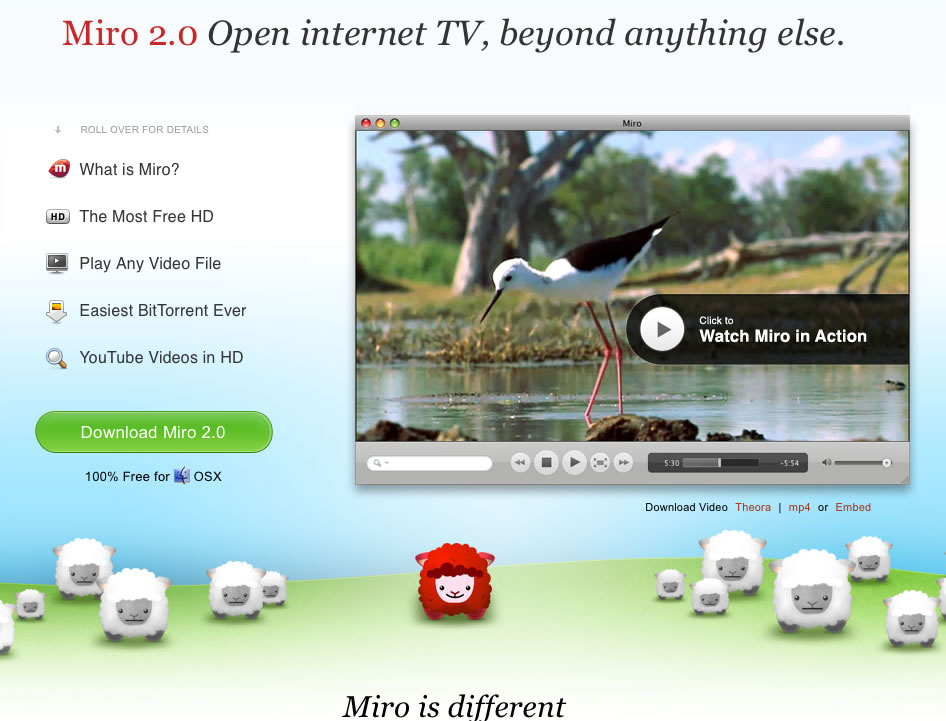Miro Vodcast Player
by Kevin Hodur

Designed to provide access to the tools of media and culture to everyone, Miro has interconnectivity at its core as a video podcast (vodcast) player. This free, open-source internet television and video player is a product of the Participatory Culture Foundation (PCF), whose goal, according to their website (participatoryculture.org), is to give citizens the tools to “engage in their culture.”
Miro is their primary product. Originally dubbed “Democracy,” Miro is a simple download available across a variety of platforms. The versions for both Mac and Windows do not require the latest operating systems and hardware configurations, seeming to hold to PCF’s goal of making Miro accessible. There is also a download for Ubuntu, and distribution across Debian and Fedora, just to name two. The depth of availability is quite impressive.
Upon installation, a relatively short procedure, Miro launches to their Guide page. Here the screen displays two large featured feeds, drawing attention to selected channels. With feeds automatically shuffling every fifteen seconds or so, you get a chance to take in what’s out there without being too overwhelmed. Beneath these feeds are static columns of information. The Just Added feature gives some idea of the variety of producers making content available, while the Popular Today column gives the first time Miro user a place to start.
For example, I found the HubbleCast under Popular Today and began exploring. Selecting the HubbleCast channel brings up another well-divided screen of information. On the left is information on adding the channel and the website of the producer. On the right there is a short paragraph describing the content of the channel. Beneath this is the most recent episode available for download, with links to the three most recent below. There is also an option to show all available videos, in this case 25. Overall, the interface is quite simple to use serves the purpose for which it was designed.
From a pedagogical perspective, Miro is a useful tool (considering the impressive array of content – nearly 6000 channels) for studying culture, media, and other similar topics. In terms of having students create video content, instructors who have assigned students to create podcasts or vodcasts will note the technological hurdles in asking students to produce video. The Miro site does offer some tips that will help students produce video, and of course alternate assignments can be constructed to lessen technological challenges. Still, as is the PCF’s goal, the barrier to entry in terms of creating and publishing video on Miro is far lower than it is for traditional broadcast formats.
Miro seems to fill a need in content, providing access to a multitude of information within the confines of one program. While the format has not been universally adopted, those content providers who are on board validate the PCF’s mission and deliver video content with low barriers around the world.